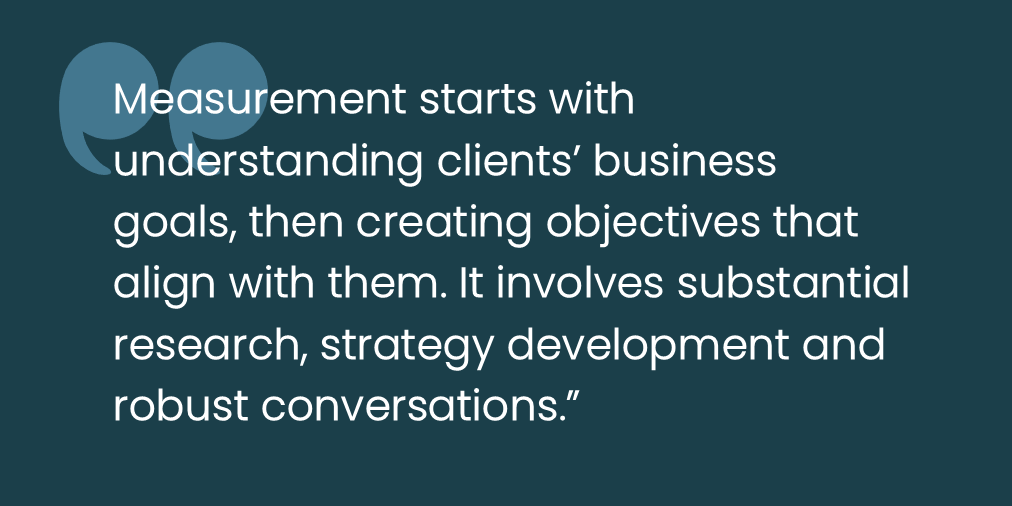
Our intuitive framework for reporting and measuring on PR and digital marketing
As we wrap up the second quarter and begin the third, our reporting team is putting together reports for clients. Clients need to measure return on investment. Getting the KPIs right takes some thought.
The PR industry has long sought to effectively measure ROI. One widely used resource on measurement is the Barcelona Principles. Introduced in 2010 by AMEC, the international association for the measurement and evaluation of communication, they provide a framework for PR measurement and a method of evaluating the success of campaigns.
Originally designed to challenge the outdated metric of Advertising Value Equivalents (AVEs), these principles saw considerable evolution through revisions in 2015 and again in 2020, reflecting both the evolving media landscape and the growing complexity and dynamism of communications.
There are three overarching principles that we think reflect the essence of the Barcelona Principles and encapsulate our reporting philosophy as a PR firm.
1. Purposeful goal setting
Setting clear, measurable, and meaningful objectives is the cornerstone of any successful PR campaign. This work starts with understanding clients’ business goals, then creating objectives that align with them. It involves substantial research, strategy development and robust conversations. By doing the hard work upfront, we can chart a path to success and provide true value to our clients.
2. Holistic measurement of results
Ultimately what matters most is business results. We look to develop and report on KPIs that connect our work with what matters most to our clients. A dashboard approach, covering multiple angles, can express a broad enough view of a campaign’s impact.
We present media outcomes in tables organized by highlights and additional coverage and add qualitative comments. We complement this snapshot coverage with additional metrics when helpful. Consistent with the Barcelona Principles, we never recommended AVEs (and never have). We’ve found intuitive value in certain implementations of Share of Voice and Potential Reach. For the latter, it’s useful to limit analysis to a predetermined set of publications, so as to create meaningful relative-value analysis from period to period.
3. Integration across all media
The growth of digital media has revolutionized the PR landscape, making it imperative for firms to consider all forms of media when planning and evaluating campaigns. Our firm believes in a truly integrated approach, where we look across traditional, digital, and social media to gauge the reach and impact of our campaigns. We look to create a dashboard that allows us to paint a complete picture of a campaign’s performance and inform strategies that truly resonate across all channels.
Our reports often include website analytics—such as Google Analytics and, more recently custom Looker Studio analysis—and social media analytics such as number of followers and, critically, engagement not just in the posts but in the content linked to.
Where relevant and possible, we work closely with digital marketing pros on both our and our clients’ teams to attribute digital exploration directly to specific PR activities. Further, a custom landing page or a unique promo code can be used to track the impact of a specific campaign.
On a related note, FUSE Research Network research continues to show that PR is perceived as more effective in shaping financial advisor opinions than advertising.
For more on our perspective, read Financial PR and digital marketing: How they work together.
Intuitive value is essential
The Barcelona Principles have been instrumental in shaping the PR industry and guiding it towards more meaningful, outcome-focused measurements. As consultants, it is our responsibility to ensure that our reporting practices provide a meaningful snapshot of a campaign’s impact.
To do this, we need to define goals, deliver relevant results to meet those goals, and measure those results in ways that make intuitive sense. Looking ahead, we remain committed to embracing the evolving nature of these principles and further strengthening our commitment to measurable, impactful PR.
Lowe Group offers a range of services related to public relations, send us a note for more information
Subscribe.
Receive the latest news and insights from Lowe Group.